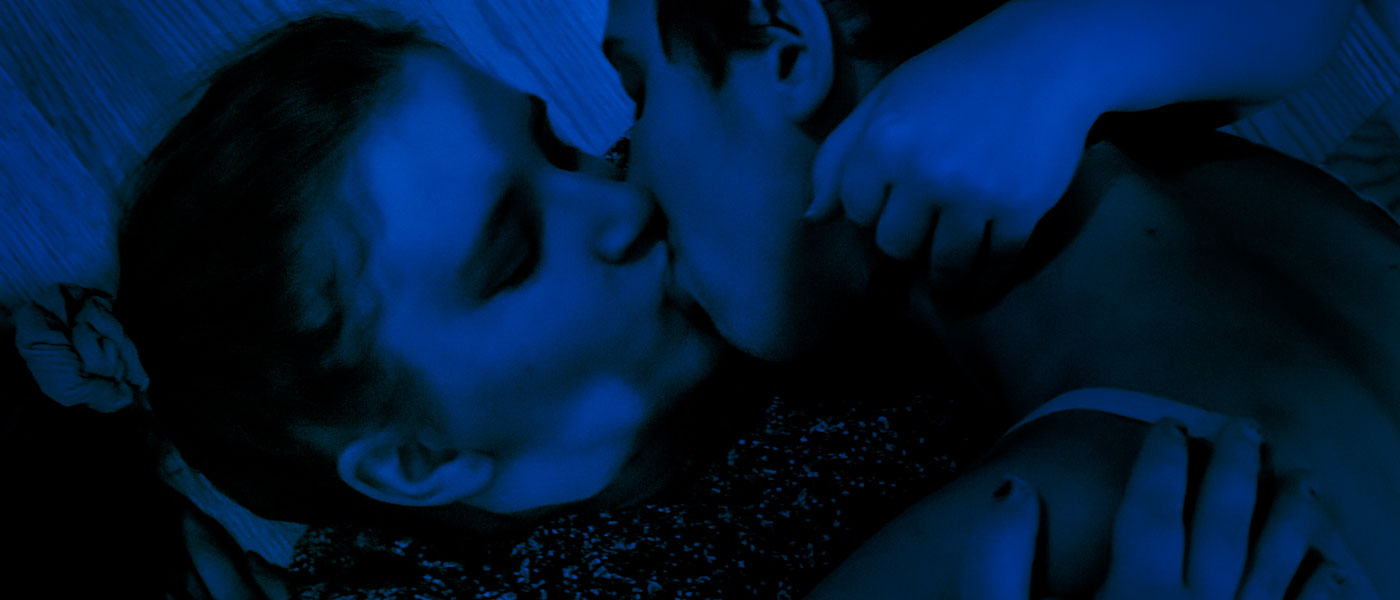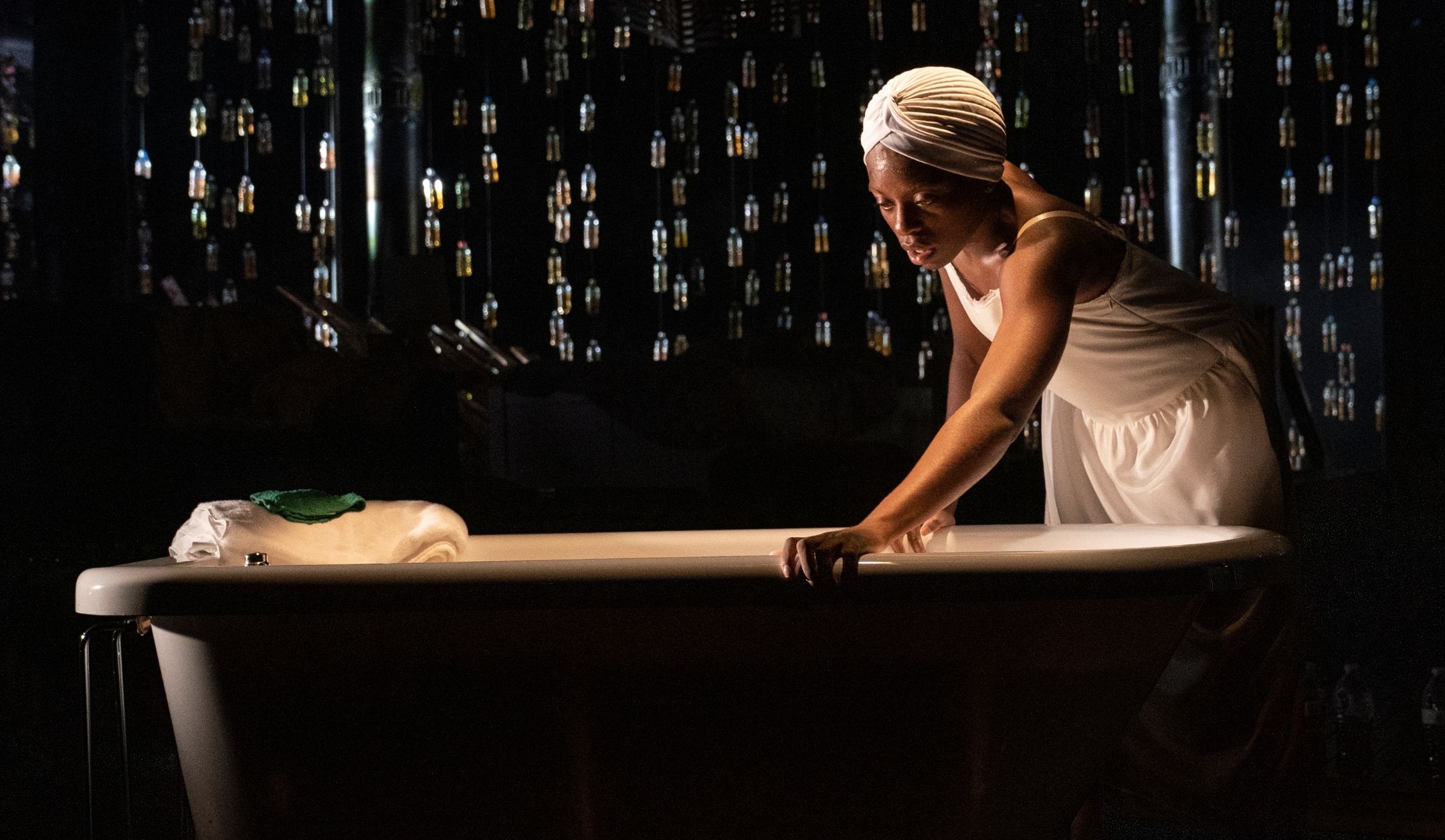
On January 11, 1992, twelve-year-old Shanda Sharer was murdered in Madison, Indiana. Four teenage girls were convicted and sentenced for the crime. The two who received shorter sentences have since been released; the other two remain in Indiana Women’s Prison.
The brutal torture and murder attracted international attention at the time. Two true-crime books were written about the case. Episodes of various television programs including Law & Order: Special Victims Unit and Cold Case were based on the crime. Shanda’s mother appeared on the TV series Deadly Women, speaking about the devastating impact the murder had on her family. Controversial lesbian artists used the crime in their work; Daphne Gottlieb, in her poem, the whole world is singing, speaks of the events from Shanda’s perspective, and Marlene McCarty’s drawing of a scene from the night of the murder, “Melinda Loveless, Toni Lawrence, Hope Rippey, Laurie Tackett, and Shanda Sharer-January 11, 1992 (1:39 am),” is in the collection of the Museum of Contemporary Art in Los Angeles.
I first heard about the crime when I was in graduate school. I remember reading in a gay newspaper that a “lesbian love triangle” led to the murder of a junior high school girl in Indiana. When I read the two true-crime books, I was struck by the notes Shanda and the girls had written to each other in class and detention. Some of the notes were innocent and naive, as one would expect from young girls. Other notes included graphic descriptions of sex, and threats of violence. The girls saved the notes, which were used as evidence at their trials.
In many plays written about young people, some by writers I admire, one can feel the adult hand shaping a moral universe for the characters to inhabit. I chose to avoid this when writing Hazelwood Jr. High. I wanted the play to feel as if it were written by a junior high school student. Because most of the characters were gay girls, I eliminated all male characters. I also eliminated teachers, parents, and adults. I wanted to contrast the ordinariness of their “school days” with the unimaginably horrible events that occurred the night Shanda was killed. Lastly, I did not want to begin the play with the murder and portentously “flash back” to the events leading up to it, as is done in many film, stage, and television adaptations of true crimes. Before the girls killed Shanda, they were not murderers, and in the early scenes of the play I wanted to present them as typical teenagers. That two of the girls had extremely troubled upbringings did not make them atypical.
I went to Indiana and did extensive research. I retraced the route the girls took on the long night of the murder, stopping by all the places where they stopped. I also drove by their homes, visited Hazelwood Jr. High, and met with Judge Todd at the Jefferson County Circuit Court. He tried three of the four cases, and agonized over the sentences. He gave me full access to transcripts of all of the trial testimony, including audio tapes of the girls on the witness stand, and I was able to view the physical evidence, such as Shanda’s shoes, which were left behind on the night of the murder. It was heartbreaking. Judge Todd gave me permission to xerox anything I wanted, including the very notes that had sparked the play. The girls’ contrasting handwriting skills, which were not evident in the true-crime books, were extremely revealing. I saw horrible pictures of Shanda’s body, and kept those images in mind as I wrote.
When Hazelwood Jr. High was complete, I submitted it to Scott Elliott, Artistic Director of the New Group, and later that same week he agreed to produce and direct the play the following season. That rarely happens. The production was “site-specific,” staged in a junior high school auditorium in New York. The design was elaborate, with a real car onstage.
The critical response was fascinating. Some reviewers dismissed the play as exploitative. Others took it very seriously. That pattern has continued over the years – and to this day. I wrote various screenplay adaptations, and for years, it was under option by producers on both coasts. Some clearly wanted a more sensational film, encouraging me to add sex scenes. A few wanted less violence, suggesting that I focus on the love triangle, and cut the murder entirely. Others encouraged me to replace one of the girls in the triangle with a boy. In many ways, this felt like the typical Hollywood writer’s syndrome. That said, certain producers and directors fully grasped the approach I had taken, and offered suggestions that deepened the psycho-sexual dimensions of the screenplay. Among those who spoke with insight about the play was Amy Rose Marsh at Samuel French.
Hazelwood Jr. High was published in 2009, but productions have been limited. I think I understand why. There are still too few plays that deal with gay characters, and when a theater or school is looking for gay-themed material, they often prefer something more inspiring than a piece involving a murder committed by teenage lesbians. Since its publication, the number of plays with gay characters has grown, and hopefully, Hazelwood Jr. High can now be considered in a larger context.
Shanda Sharer’s murder remains in the public consciousness to this day, and in the past few years, there has been renewed interest in the case. A Wikipedia page examines all aspects of the murder, including the investigation, the judicial process, the sentencing, and the appeals. Various blogs, websites, and YouTube documentaries consider the murder in detail. A two-part episode of Dr. Phil was recently devoted to the crime. A Facebook page, Remembering Shanda Renee Sharer, was created “to keep her memory alive.” Someone I never met, Erin Edgeworth, created a Facebook page about the play itself. Nancy Taylor Porter, PhD, Theatre Department Chair at Illinois College, recently published a book, Violent Women in Contemporary Theatres, which examines the play in scholarly detail. The screenplay has been optioned again.
In October 2016, Center Stage Players/Fair Lady Productions in Illinois produced Hazelwood Jr. High. According to director Megan Hill, “The cast and I loved the challenge, and we got nothing but positive feedback from our audience. These are great roles for actors.” The next month, Cupcake Lady Productions presented a well-received “immersive” production of the play in a classroom in Brooklyn. The audience was seated in the center of the room, with the action swirling around them. It couldn’t have been further removed from the big-budget New Group production. The intimacy of the space, and the proximity of the actors made the experience voyeuristic, and extremely unsettling. According to one of the reviewers, “While I was able to keep my composure as I watched the show, I’ll admit to feeling emotional after arriving at home. The feelings the play left me with were comparable to how I felt after I first saw The Laramie Project.” The director of that production, Sean Pollack, likens the play to Into The Woods: “The first half is relatively light, with characters making reckless decisions. In the second half, the characters are forced to grapple with the consequences of these decisions.”
Having seen various productions and readings over the years, I feel that the play is best se
rved by simplicity and honesty. The girls are young and from a small town, so despite the humor in the play, it’s important that they are not judged or commented on. There is no irony in my play. They’re not trendy or urban in any way – there is an emptiness to their lives that they’re desperately trying to fill. The play is deeply romantic. The girls rarely have the words to express what they’re feeling. The New York Times reviewer said that the play concerned “the solemn earnestness of young love and social warfare, highlighting the contrast between the flatness of the dialogue and the intensity of the confused passions behind it.” That’s exactly right. Also, I calibrated the exact amount of violence I wanted in the play, which is considerably less than what occurred the night of the murder. I feel it’s important not to add more violence in a production, or to bring the offstage violence onstage. In the later scenes, when the girls enter the criminal justice system, they offer contradictory descriptions of what happened the night of the murder. In these offstage scenes, I want audiences to try to determine who is telling the truth.
The crime committed by four young girls in Indiana on a cold winter night in 1992 is incomprehensible, and endlessly fascinating. That is what inspired me to write Hazelwood Jr. High. I’m grateful that, over the years, so many artists have responded passionately to the play and the screenplay. And I’m inspired that a new generation of theatre artists is now investigating the material, finding something in it that speaks directly to the world in which these artists grew up. A production of Hazelwood Jr. High can be produced on a large scale or on a shoestring budget, in a big space or a small room, but if the approach is unembellished, tender, and sincere, it can be a compelling experience.
To purchase a copy of Hazelwood Jr. High click here, and to learn more about licensing a production, click here.

Real Pleasures to Perform: Plays Inspired by True Events

Newly Available for Licensing – November 2025 (US)

